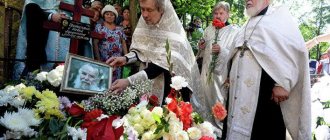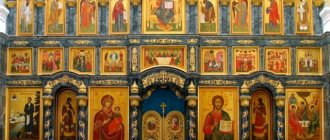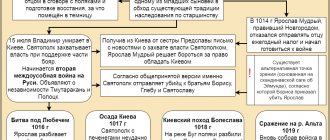It is difficult to argue with the fact that ancient Slavic and Orthodox rituals and traditions have become closely intertwined over time. Today it is almost impossible to separate one from the other - especially when it comes to funeral rituals. For example, when one of the inhabitants of the house leaves our world, it is customary to cover the mirrors - and this is a pagan tradition, which the priest may call superstition, although he will not condemn such an action. However, any funeral rites should be carried out in a certain order to ensure an easy transition for the soul of the deceased to the Kingdom of Heaven.
The funeral of an Orthodox Christian consists of a number of sacred moments
Russian funeral ritual
Various kinds of ritual traditions existed among the pagans. However, after the Baptism of Rus', human burial rites acquired Christian symbolism. The body of the deceased was no longer burned at the stake or lowered into the water, but was buried in the ground. At the same time, coffins appeared - wooden boxes in which the bodies of the deceased were placed after the end of earthly life.
Some Russian funeral rites associated with burial do not have any specific meaning or religious background, but they allow the relatives of the deceased to organize the funeral and distract from the pain of loss.
Why do Christians call the deceased “deceased”
In the eyes of the Christian Church, Orthodox and Catholic, all earthly life is considered preparation for a more important, afterlife. It is believed that when a person dies, the immortal soul goes to God's private judgment, and the body of the Orthodox sleeps in the ground, awaiting the general resurrection and the Last Judgment. That is why in Orthodoxy the concepts of “deceased”, that is, sleeping, and “deceased” - calm, arose. Russian funeral rituals require that the inside of the coffin be furnished like a bed—as if the body were being laid to sleep rather than buried.
Preparing for the funeral
All Russian funeral and memorial traditions have a deep meaning, and they are based on the most ancient Slavic traditions.
Preparations for the funeral of the deceased can begin only after all official procedures have been completed - the body has been examined by a local police officer, a doctor, etc.
Deceased's vestment
Vestment of the deceased
The clothes for the deceased may not be new, the main thing is that they are clean and neat.
After death, the body of a Christian is washed. Such a ritual symbolizes the purity and purity of the spirit, which will soon appear before the face of the Lord. For this ritual, a soft sponge and ordinary soap are used. After completing the ablution, the body is dressed in new beautiful clothes, which are a symbol of incorruption.
Entombment
In Rus', the coffin was perceived as an imitation of a bed - a person who has fallen asleep in eternal sleep should be as comfortable in it as in his own bed. After the relatives or friends of the deceased placed the body in the coffin, an Orthodox cross was placed on the person. It is customary to tie the limbs - the hands of the deceased person are folded on the chest, the right one should lie on the left.
A small icon is placed in the left hand - this shows that the deceased believed in God, handed over his soul to Him, and now passes into the Kingdom of Heaven.
One of the relatives or relatives should be next to the deceased all those days while the coffin is in the house - his prayers will ease the suffering of the soul.
What is accepted and what is not accepted to be placed in the coffin of the deceased
The first thing that is put into the coffin is the ropes with which the hands and feet were tied. A comb or comb that was used to comb a person after ablution is placed in the coffin.
In general, the Orthodox Church is of the opinion that a person comes into life empty-handed, and therefore must leave in the same way. Burying personal belongings during funerals among Russian clergy is a pagan ritual. Despite this, a family faced with grief puts things dear to the person into the coffin. So, if an unmarried girl has passed away, a veil is placed at her head, if the deceased is a little girl, she is dressed in a beautiful dress, and a doll or other toys are placed next to her. When pregnant women are buried, diapers, pacifiers, and diapers are placed in the coffin. If the deceased person walked with a cane, it can also be placed in the coffin.
Among the most surprising Russian funeral traditions in the eyes of foreigners is preparation for one’s own death. Until now, in some regions, people (mostly elderly) prepare funeral clothes and shoes, save money to purchase a coffin and other attributes.
The most ancient funeral customs
Belief in an afterlife is inherent in every culture. Only the ideas of what the afterlife is like differ. For some, this is a place of eternal suffering of the soul of the deceased, for others - a place of feasts and idleness. Still others see the afterlife as the final repose of the soul in bliss. Cultures have one thing in common: denial of non-existence, unwillingness to believe in the finality of death.
Already the very first Paleolithic burials confirm this. It was customary to lay the dead in the ground in a fetal position: with legs pulled up to the chest, on their sides. This symbolized the transition of a person from one life to another. In later burials of Neanderthals, parting gifts are found that the reborn person will need in his new life: household items corresponding to the occupation of a man or woman.
Absentee and in-person funeral services
Speaking about how Russians are buried, one cannot help but mention such a ritual as the funeral service. As is clear from the name of the rite, it consists of a large number of chants. The funeral service takes place on the third day after the death of a person, on the day of his funeral. Relatives, friends and close people of the deceased stand at the coffin, holding lit candles in their hands, and pray for his soul together with the clergyman. Traditionally, the funeral service is performed in a church, but it is possible to perform the ceremony at home, in a cemetery, or even in absentia.
The latter is possible in several cases, for example when:
- the deceased was buried in a hurry - for example, during military operations;
- the person was buried in another country where there was no access to the Russian Orthodox Church;
- a person passed away during a disaster or emergency;
- relatives receive a message that the sailor died on the ship, his body was lowered into the sea or buried in a nearby place.
Funeral service in church
A funeral service is not the forgiveness of all sins committed during life, but the forgiveness of those sins for which a person repented during his life.
A funeral service takes place in absentia after a funeral in Russia as follows: the priest sanctifies the prepared land and blesses it. Upon completion of the ceremony, he transfers the earth to the relatives of the deceased so that they take it to the grave and sprinkle it crosswise.
Prohibitions regarding cemeteries
No items are taken from the cemetery, except those that can be distributed by the relatives of the deceased. If during burial some belongings of those present fall into the grave, they are not removed, even if they are valuable items. Such cases are symbolically interpreted as the recovery by the deceased of what he did not receive during his lifetime. Quarrels, disputes, curses and any conflict situations in the cemetery are considered the gravest mistakes. Immediately after the funeral, it is not recommended to visit the graves of other relatives or friends located in the same cemetery. The day of the funeral should be dedicated to only one deceased person.
What happens to the soul after the funeral service
The funeral service is very important for the soul. Therefore, it is the duty of every believer to go to church to have the funeral service performed. But what happens to those who pass away - and who have neither relatives nor friends? There is no one to bury such people, no one will pray for them, moreover, their bodies are buried unidentified - in common graves. Does this mean that restless souls walk the earth, frightening the living?
The priests say this is a superstition based on ideas from films and books in which people turn into ghosts. Neither science nor the church believe in the existence of ghosts. And God is merciful - and accepts the souls of all the departed. And this does not affect whether the person was inveterate or not.
How should you behave at a funeral?
People at a funeral
Crying and lamentation at a funeral are not entirely appropriate - the soul of the deceased gains the opportunity to meet God, which is a great joy for it.
You should not cry at a funeral - some believe that bitter tears force the soul of the deceased to remain on earth, while the clergy say that a funeral for the soul is a joyful event, because it is preparing to meet the Living God. Children under one year old and pregnant women should stay away from funerals
You should not say anything negative about the deceased person - either good or nothing at all.
The rite of Litia, performed by a layman at home and in the cemetery
Through the prayers of the saints, our fathers, Lord Jesus Christ, our God, have mercy on us. Amen.
Glory to Thee, our God, glory to Thee.
Heavenly King, Comforter, Soul of truth, Who is everywhere and fulfills everything, Treasure of good things and Giver of life, come and dwell in us, and cleanse us from all filth, and save, O Good One, souls ours. (The prayer to the Holy Spirit is not read from Easter to the Day of the Holy Trinity. From Radonitsa to the Ascension, the Lithium begins with the singing: Christ is risen from the dead, trampling death upon death, and giving life to those in the tombs. (Three times). From the Ascension to Pentecost - with the reading of the Trisagion).
Holy God, Holy Mighty, Holy Immortal, have mercy on us. (three times)
Glory to the Father and the Son and the Holy Spirit, now and ever and unto ages of ages. Amen.
Most Holy Trinity, have mercy on us; Lord, cleanse our sins; Master, forgive our iniquities; Holy One, visit and heal our infirmities, for Thy name's sake.
Lord, have mercy (three times).
Glory to the Father and the Son and the Holy Spirit, now and ever and unto ages of ages. Amen.
Our Father, who art in heaven! Hallowed be Thy name, Thy kingdom come, Thy will be done, as it is in heaven and on earth. Give us this day our daily bread; and forgive us our debts, just as we forgive our debtors; and do not lead us into temptation, but deliver us from the evil one.
Lord have mercy. (12 times)
Glory to the Father and the Son and the Holy Spirit, now and ever and unto ages of ages. Amen.
Come, let us worship the King our God.
Come, let us worship and fall down before Christ, our King God.
Come, let us bow and fall down to Christ Himself, the King and our God.
Psalm 90
Living in the help of the Most High, he will dwell in the blood of the Heavenly God. Says the Lord: Thou art my protector, and my refuge, my God, and I trust in Him. For He will deliver you from the net of the trap and from the words of rebellion, His splash will overshadow you, and under His krill you hope that His truth will surround you with weapons. Do not fear from the fear of the night, from the arrow that flies in the days, from the thing that passes in the darkness, from the clot and the demon of the midday. Thousands will fall from your country, and darkness will be at your right hand, but it will not come near you: behold your eyes, and see the reward of sinners.
For You, O Lord, are my hope, You have made the Most High your refuge. Evil will not come to you, and wound will not come near your body. As His angel commanded you, to keep you in all your ways. They will lift you up in their arms, lest they dash your foot against a stone. Step on the asp and the basilisk, and cross the lion and the serpent. For I have trusted in Me, and I will deliver; I will cover you, because you have known My name. He will call to Me, and I will hear him; I am with him in tribulation, I will destroy him, and I will glorify him; I will fill him with long days, and I will show him My salvation.
Glory to the Father and the Son and the Holy Spirit, now and ever and unto ages of ages. Amen.
Alleluia, alleluia, alleluia, glory to you, God. (three times)
Troparion, tone 4:
From the spirits of the righteous who have passed away, give rest to the soul of Your servant, O Savior, preserving it in the blessed life that belongs to You, O Lover of Mankind.
In Thy chamber, Lord, where all Thy saints rest, give rest also to the soul of Thy servant, for Thou art the only Lover of mankind.
Glory to the Father and the Son and the Holy Spirit.
You are God, who descended into hell, and who can loose the bonds of the bound, who give rest to you and the soul of your servant.
And now and ever and unto ages of ages. Amen.
One Pure and Immaculate Virgin, who gave birth to God without a seed, pray for his soul to be saved.
Sedalen, voice 5th:
Rest, our Savior, with the righteous of Thy servant, and this one has settled in Thy courts, as it is written, despising, as Good, his sins, voluntary and involuntary, and all that is known and not known, to Man By the way.
Kontakion, tone 8:
With the saints, rest, O Christ, the soul of Your servant, where there is no sickness, no sorrow, no sighing, but endless life.
Removal of the body and funeral procession
According to tradition, the removal of the body is scheduled no earlier than 12:00-13:00, but in such a way that the funeral ritual is completed before sunset. Usually take-out takes place before 14:00. The body is carried forward feet first, trying to ensure that the coffin does not touch the door frames or threshold.
Before removal, those who came to say goodbye to the person can line up along the path of the funeral procession. Before removing the body of the deceased from the house, the following is taken out of the house:
- wreaths;
- portrait of the deceased;
- pillow with awards;
- coffin lid
After 10 minutes, the coffin is brought out, which is carried to the hearse, and relatives come out. Before loading the coffin into the hearse, it is placed near the car for a few minutes and left open - this is how those who were unable to visit the house and will not go to the cemetery can say goodbye to the deceased.
In the hearse, the coffin is placed with the head forward on a pedestal, and mourning wreaths are placed nearby.
Speaking about the traditions and customs of Russian funerals, one cannot help but talk about mourning. According to tradition, lamentations and tears characterize the personality of a person who has passed away: the more crying, the better the person’s relationships with others. In the old days in Rus' there were mourners - women who were invited to funerals to mourn the deceased. Folklore has also preserved Slavic funeral lamentations for us.
The funeral procession can stop along the way only at the church and at the cemetery. At the same time, you can slow down when passing or passing places important to the deceased. Along the route, you can scatter fir branches or fresh flowers - carnations for a man's funeral and roses for girls and women.
The immediate family cannot serve as pallbearers. Usually this service is performed by specially invited people, friends or colleagues of the person who has passed away.
Ritual crosses on the grave
The tradition of placing a cross on the grave after burial appeared quite a long time ago: scientists say that they were installed by the ancient Celts - in this way they protected the soul of the deceased from evil spirits. Among the ancient Incas, the cross symbolized the four cardinal directions. Among the Slavs, grave crosses were considered to be the receptacle for the soul of the deceased. For Christians, the cross is a symbol of the salvation of the deceased through the sacrifice of Jesus Christ.
Today, the cross is more of a tribute to tradition rather than a prerequisite for the design of a grave. It is customary to place it at the feet - in our country it is believed that this emphasizes the fact that the deceased relied on faith throughout his life. The cross can be made not only of wood, but also of other materials - you can use stone, metal and even plastic.
Orthodox funeral
Table at the funeral
You cannot drink alcohol during the funeral meal. But talking about the deceased, remembering him and wishing him well is necessary.
After the funeral service is over and the coffin with the person’s body is buried, relatives and friends of the deceased go to a memorial meal. In part, it can be considered Christian alms for everyone who is going to accompany a person on his final journey. Funerals can be held on different days:
- funeral day;
- ninth day;
- fortieth day;
- six months after death;
- year after death;
- on your birthday.
A funeral meal should not be lavish, because a funeral is not a reason for a cheerful banquet! There are a number of prohibitions: you cannot listen to music during the wake, and there should be no alcoholic beverages on the table. The clergy say that drinking alcohol only harms the soul of a deceased person. The food should be simple, for example, you can remember the deceased with kutya.
If the funeral took place on days of fasting, the food should be lean. On weekdays during Lent, funeral services are not held - they are usually postponed to the following Saturday and Sunday. Those memorial days that fell on Bright Week, as well as on Monday of the second Easter week, should be transferred to Radonitsa.
To summarize, let's say: death is a part of every person's life. For God there are no dead people - there are only dead ones. Every believer (regardless of religion - be it a Muslim, a Christian or a Buddhist) should be calm about such a procedure as burying the deceased after a funeral. A funeral is only a temporary separation from people dear to your heart. It is important to conduct them, pray for them, light candles and give alms.










